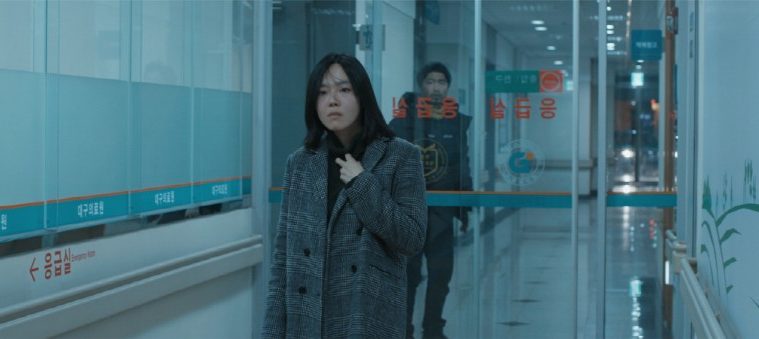To see that Korean cinema is at a healthy place right now, one must look no further than the official selection of the Cannes Film Festival this year. Besides the routinely Korean-dominated Midnight sidebar, where both The Villainess and The Merciless bowed, Hong Sang-soo showed up twice with The Day After and Claire’s Camera. And of course Bong Joon-ho’s Okja also premiered in competition. Well, we’re happy to report that such staggering variety of arthouse/box office successes doesn’t seem to have sucked all oxygen out of the business for aspiring filmmakers to try their hand.
How to Breathe Underwater, writer/director Ko Hyun-seok’s feature debut which premiered in the “New Currents” section of the 2017 Busan International Film Festival, is a formally arresting exposé on the alienation and randomness of urban life that conjures up a lot with very little. While some might find the movie slight for its lack of prominent character development or a full-fledged “plot,” the evocative voice and assured style of its maker impress nonetheless.

The movie opens with a brief prologue showing two garbage collectors silently going about their work cleaning the streets of a slumbering city. They stop short upon seeing something off-camera, stunned. Without letting us in on the surprise, focus is turned abruptly to a young couple with an audibly distressed baby, only to cut swiftly away to another, slightly older couple with a teenage son. These characters’ names and circumstances will be revealed bit by bit, although there’s a general hush of anonymity about them, like they’re just accidental stars of their own story.
Over the course of the film we accompany these two families through one fateful day where decisions must be made and lives will be lost, until the familiar garbage truck comes back into view, this time allowing us to see what made the street cleaners involuntary witness to a nameless tragedy.
It’s commonly known that films are made in the editing room. But in this case the film’s editing might actually tell you more about what it’s trying to say than anything that happens in it. To be sure, there is a chain of events to follow here. One of the characters is assigned the unenviable job of handing out letters of dismissal to his co-workers while his depressed wife can’t seem to get it together and transfer that deposit for their new home in time. Another character receives such a letter and must pick someone from his team (or himself) to sack, which he can’t bear to admit to his wife who’s taking their son to the hospital on his birthday. Distracted and stressed out, these lost souls keep walking in and out of each other’s lives without ever realizing it.

This Crash-like conceit that we’re all connected obviously accentuates the editor’s work, but that’s not what makes it special. Rather, it’s how Ko shuffles and reassembles the storyline that fascinates. The movie is divided into many short, temporally disconnected scenes, meaning the viewer will often see an encounter that must have taken place earlier in the chronology or revisit the same telephone call from another end at a later time. This could feel like a stunt initially, and it does get repetitive after you see the trick, yet slowly but surely, it creates a rhythm, a language all its own.
Indeed, through this slightly manic structure that heightens the individual perspective and turns everything into faint echoes of what’s come before, Ko successfully communicates not just the anxiety and loneliness of his characters, but also an overall sense of quiet suffocation. Fragmented, insistent, erratic, the way this film unfolds eventually becomes an approximation of post-modern city life itself.
Despite the evidently modest budget, technical details are polished, in particular the minimally but effectively used music which hits the right jagged note at the start and end of the film. The script could use some tweaks to fix a couple of noticeable bugs but how it imagines our indifferent coexistence as an interlocking design of mindless coincidences is curious enough to keep you engaged. Ultimately, How to Breathe Underwater isn’t the kind of drama that has a clear “point” to make. As its metaphorically rich title would suggest, however, it recalls with hypnotic poise the sometimes stifling isolation of living among millions of strangers.
How to Breathe Underwater premiered at the 2017 Busan International Film Festival.

